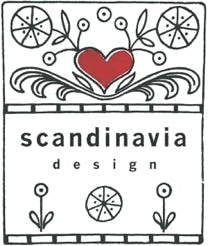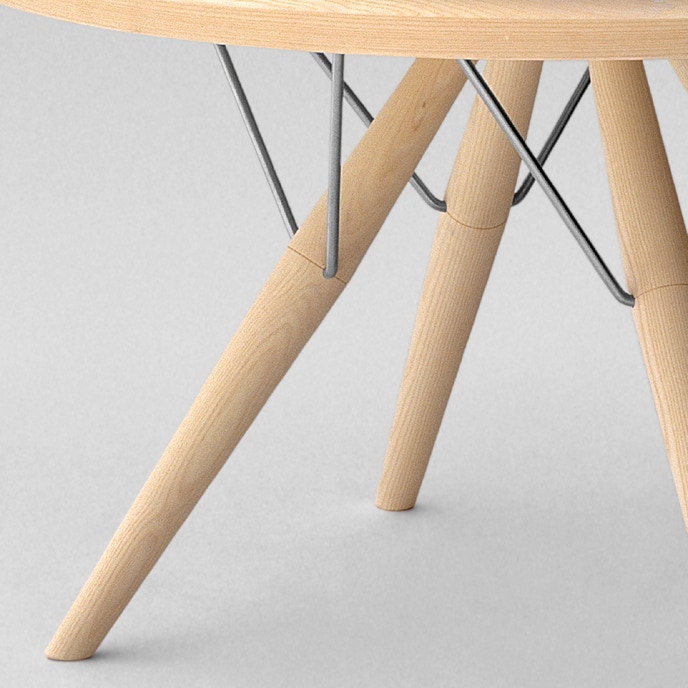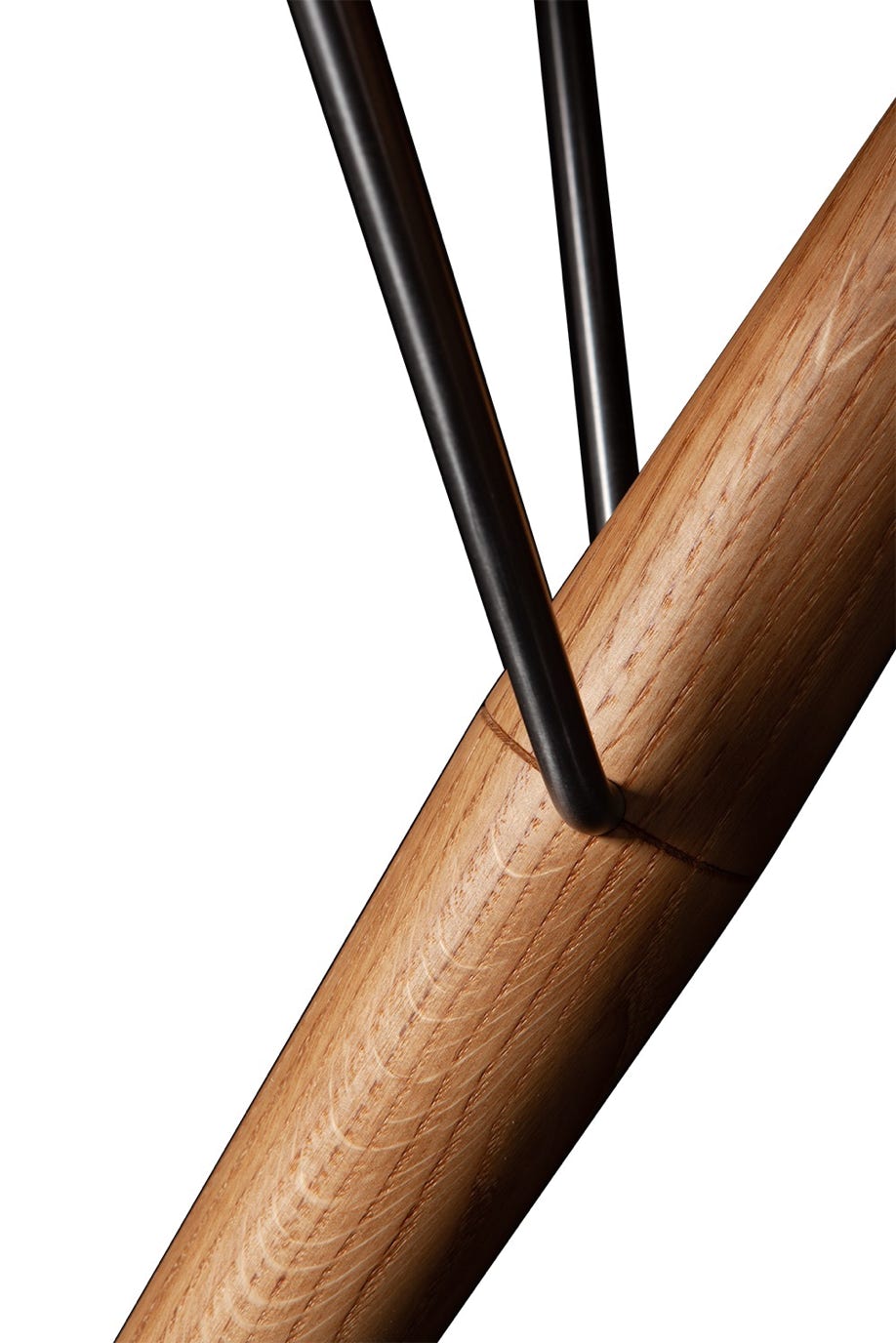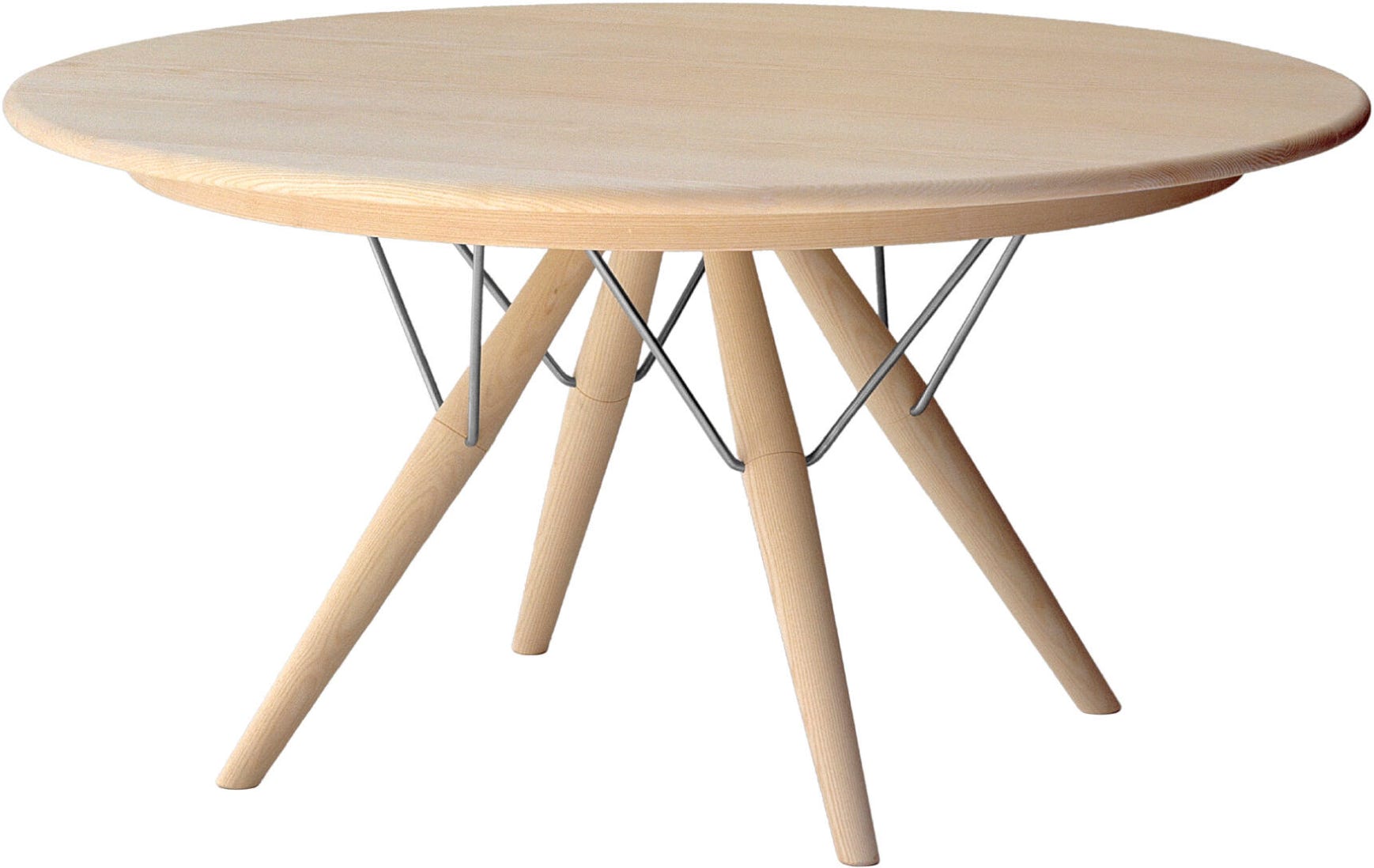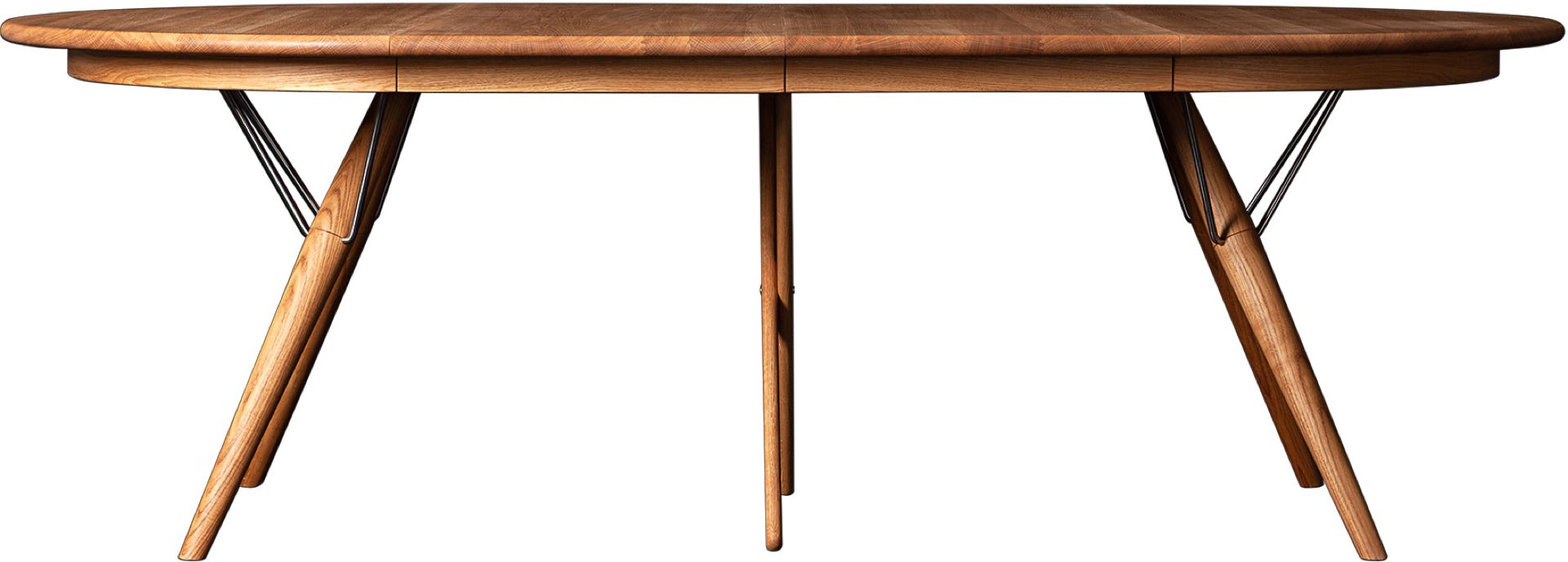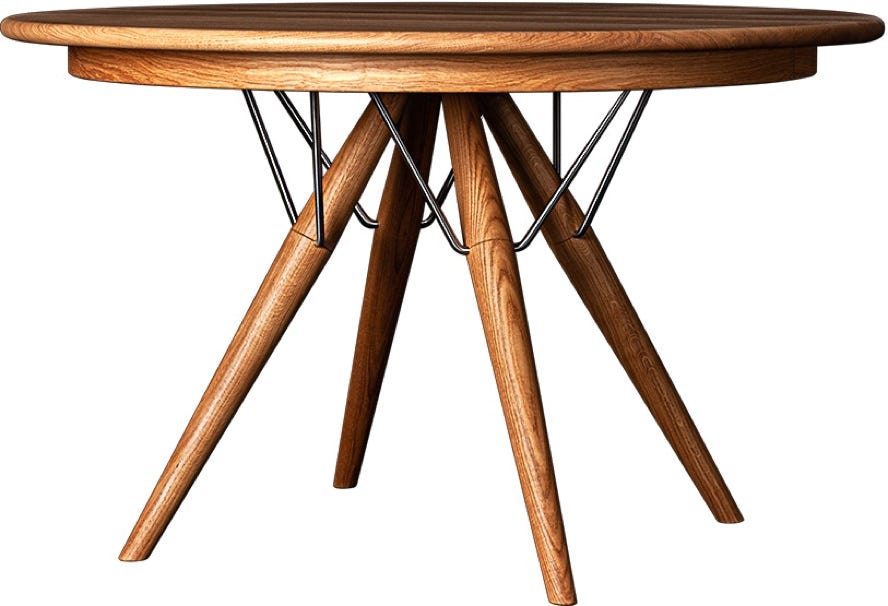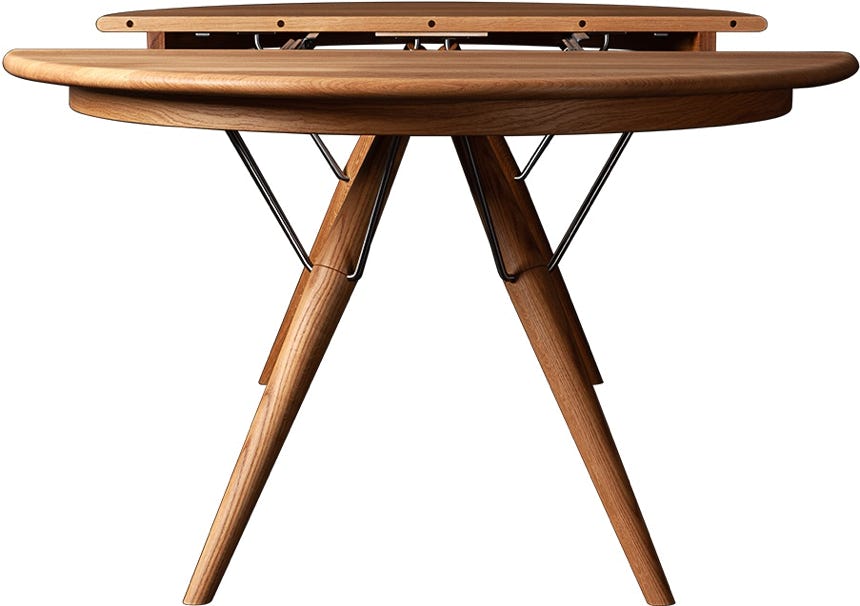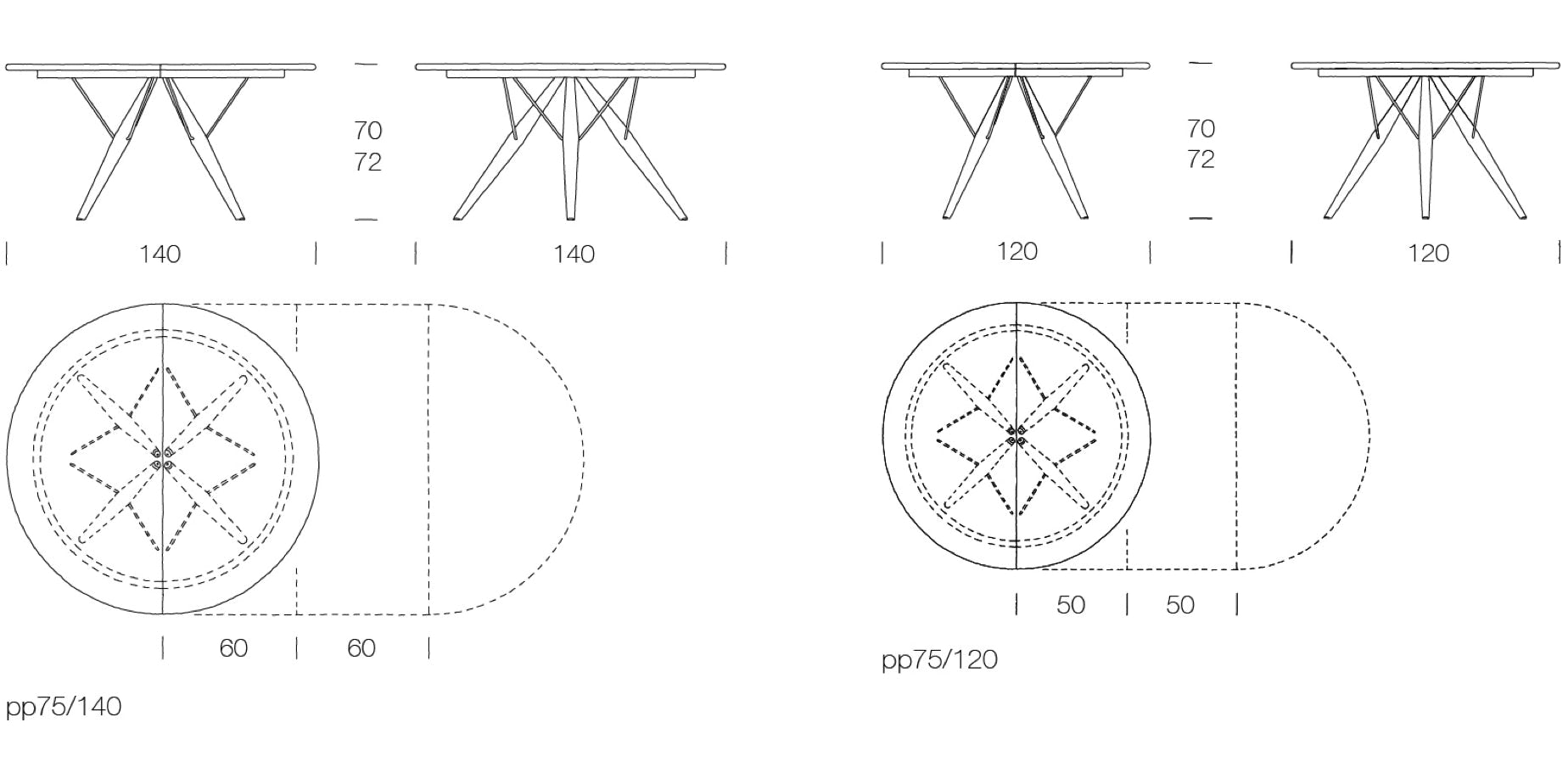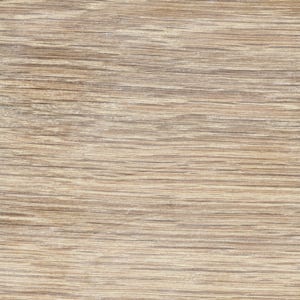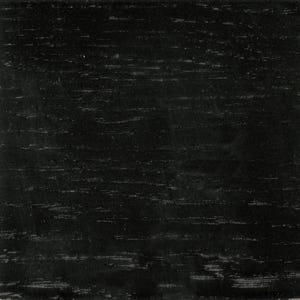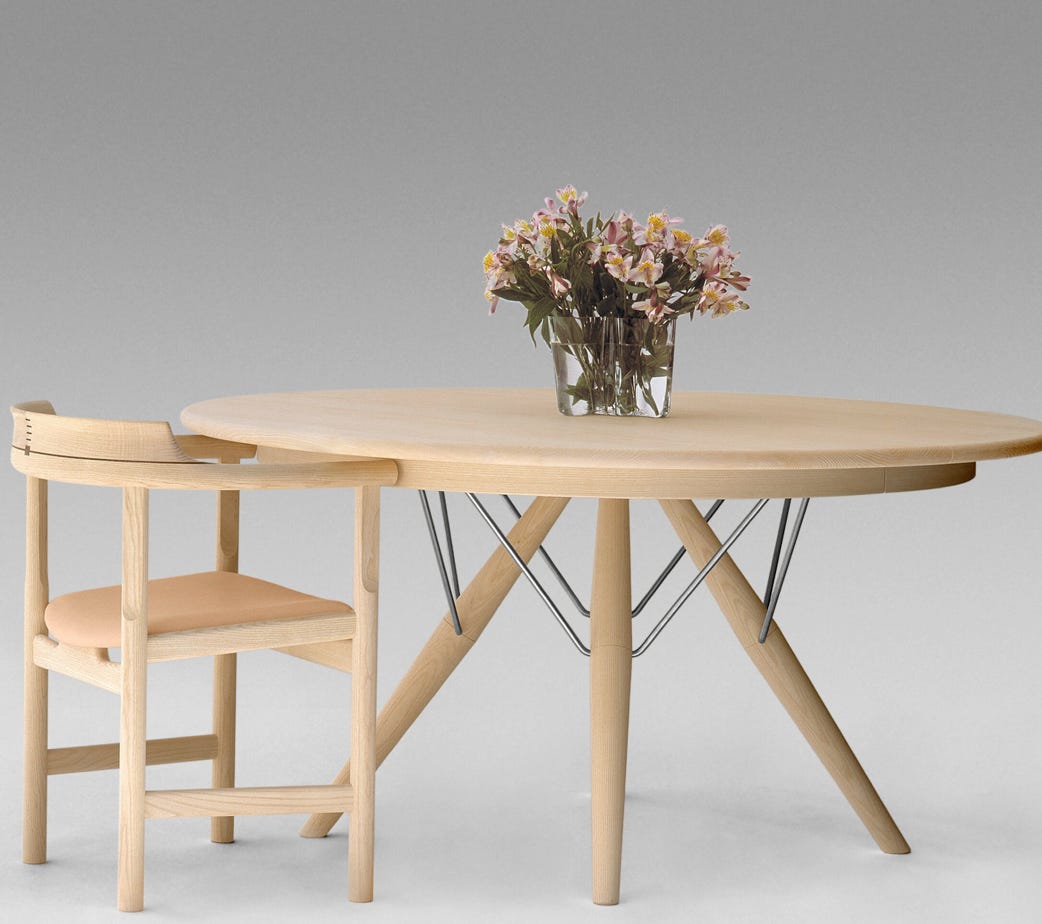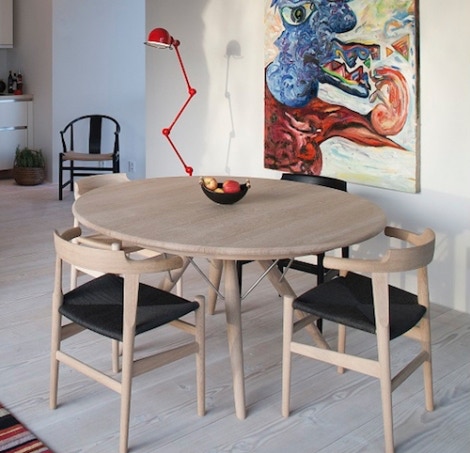The PP75 extendable table has a remarkable refinement and practicality. Wegner has designed a table base that gives as much room as possible for the legs of the seated people. Four solid wooden feet meet at the center of a round table top. Each of them is held by a polished stainless steel bar: it passes through the leg and is attached to the table top. The structure of this piece of furniture is so strong that the table can take up to 2 extension leaves in its center without needing an additional support.
The PP75 extendable table is available in two sizes – Ø120cm and Ø140cm – and in a multitude of wood finishes. It can take up to 2 extensions, in veneer or solid wood; the table then goes from round to oval, for a maximum length of respectively 220cm and 260cm.
Leaves must be ordered along with the table. Solid wood leaves are made of the same log as the table top, for a perfect homogeneity. Veneered leaves differ from the table top in colour and structure.
The table PP75 diameter 120cm can take 2 extension leaves of 50cm.
The table PP75 of diameter 140cm can take 2 of 60cm.
Ø120 cm table
from
50 x 120 cm leave
from
Ø140 cm table
from
60 x 140 cm leave
from
Free samples
(against deposit)
soaped oak
oiled oak
white oiled oak
black painted oak
(wood grain visible)
soaped ash
white oiled oak

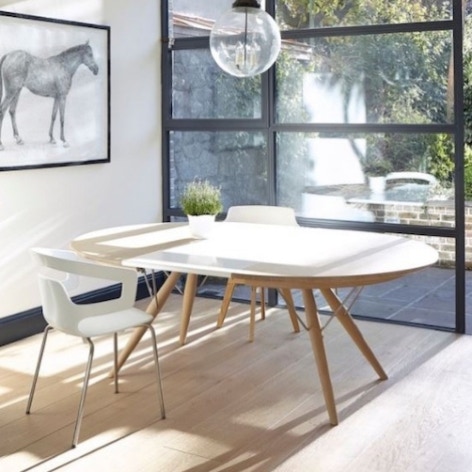
Hans J. Wegner

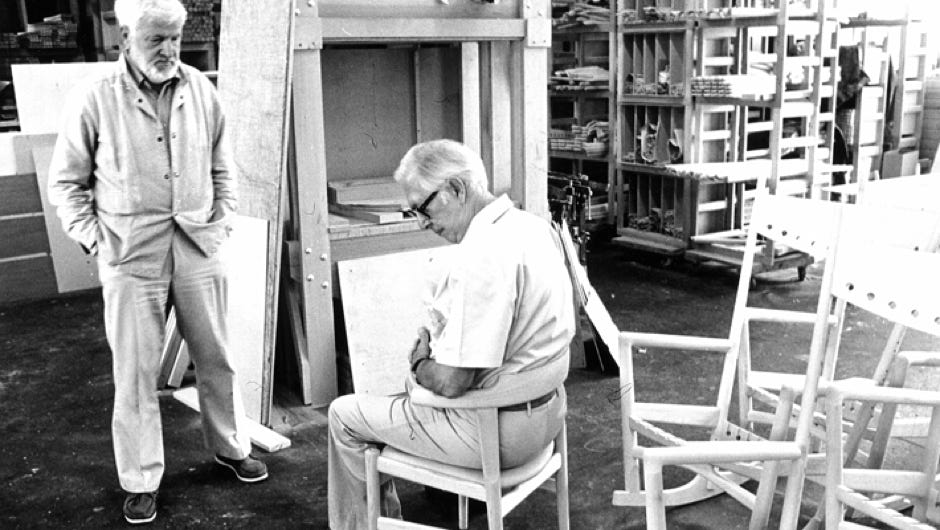
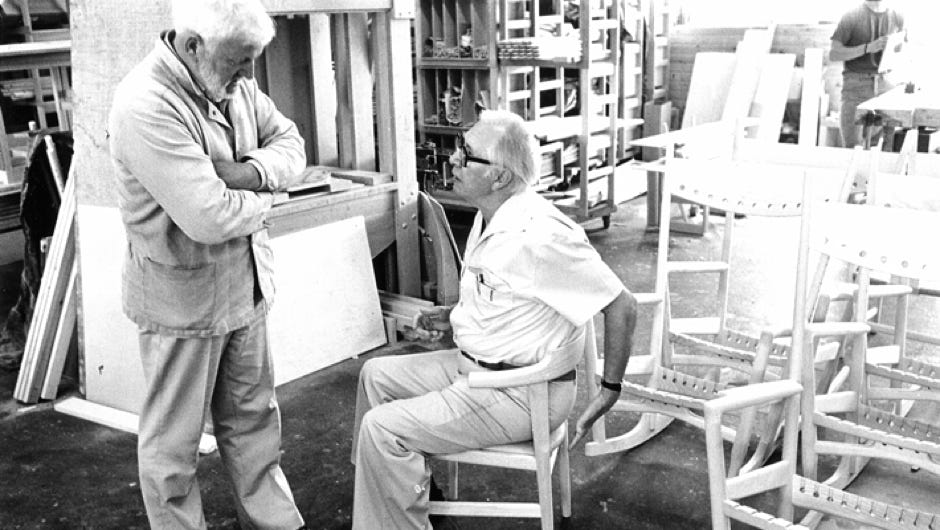
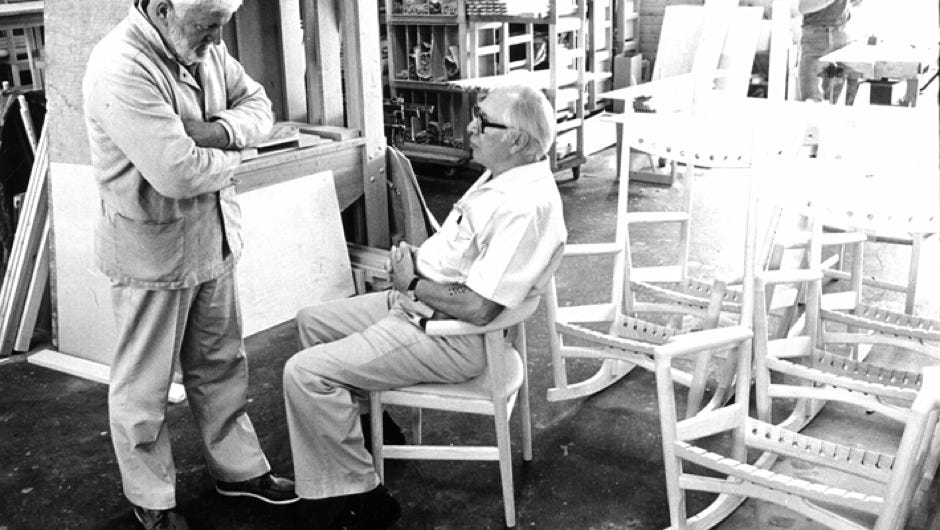
Hans J. Wegner was born in 1914 in Tønder, Denmark, the son of a shoemaker. At the age of 17, he finished his apprenticeship as a cabinetmaker with H. F. Stahlberg, in whose workshops Wegner’s first design experiments took form. He moved to Copenhagen as a 20 year-old, and attended the School of Arts and Crafts from 1936 – 1938 before he began working as an architect.
As a young architect, Wegner joined Arne Jacobsen and Erik Møller in Århus, working on furniture design for the new Århus city hall in 1940. It was during the same year that Wegner began collaborating with master cabinetmaker, Johannes Hansen, who was a driving force in bringing new furniture design to the Danish public.
The Copenhagen Museum of Art and Industry acquired its first Wegner chair in 1942.
Wegner started his own design office in 1943. It was in 1944 that he designed the first “Chinese chair” in a series of new chairs that were inspired by portraits of Danish merchants sitting in Ming chairs. One of these chairs, the “Wishbone Chair”, designed in 1949 and produced by Carl Hansen & Son in Odense since 1950, became the most successful of all Wegner chairs.
Among Danish furniture designers, Hans J. Wegner is considered one of the most creative and productive. He has received practically every major recognition given to designers, including the Lunning prize, the grand prix of the Milan Triennale, Sweden’s Prince Eugen medal and the Danish Eckersberg medal. Wegner is an honorary Royal designer for industry of the Royal Society of Arts in London. Almost all of the world’s major design museums – from The Museum of Modern Art in New York to Die Neue Sammlung in Munich – include his furniture in their collections.
Hans J. Wegner died in Denmark in January, 2007.
Hans J. Wegner’s contribution to Danish Modern:
- First a cabinetmaker, then a designer: integrates exacting joinery techniques and exquisite form.
- A deep respect for wood and its characteristics – and an abiding curiosity about other natural materials
- Brings an organic, natural softness to formalistic minimalism
- Generally regarded as ”the master of the chair”, with more than 400 chair designs to his name
